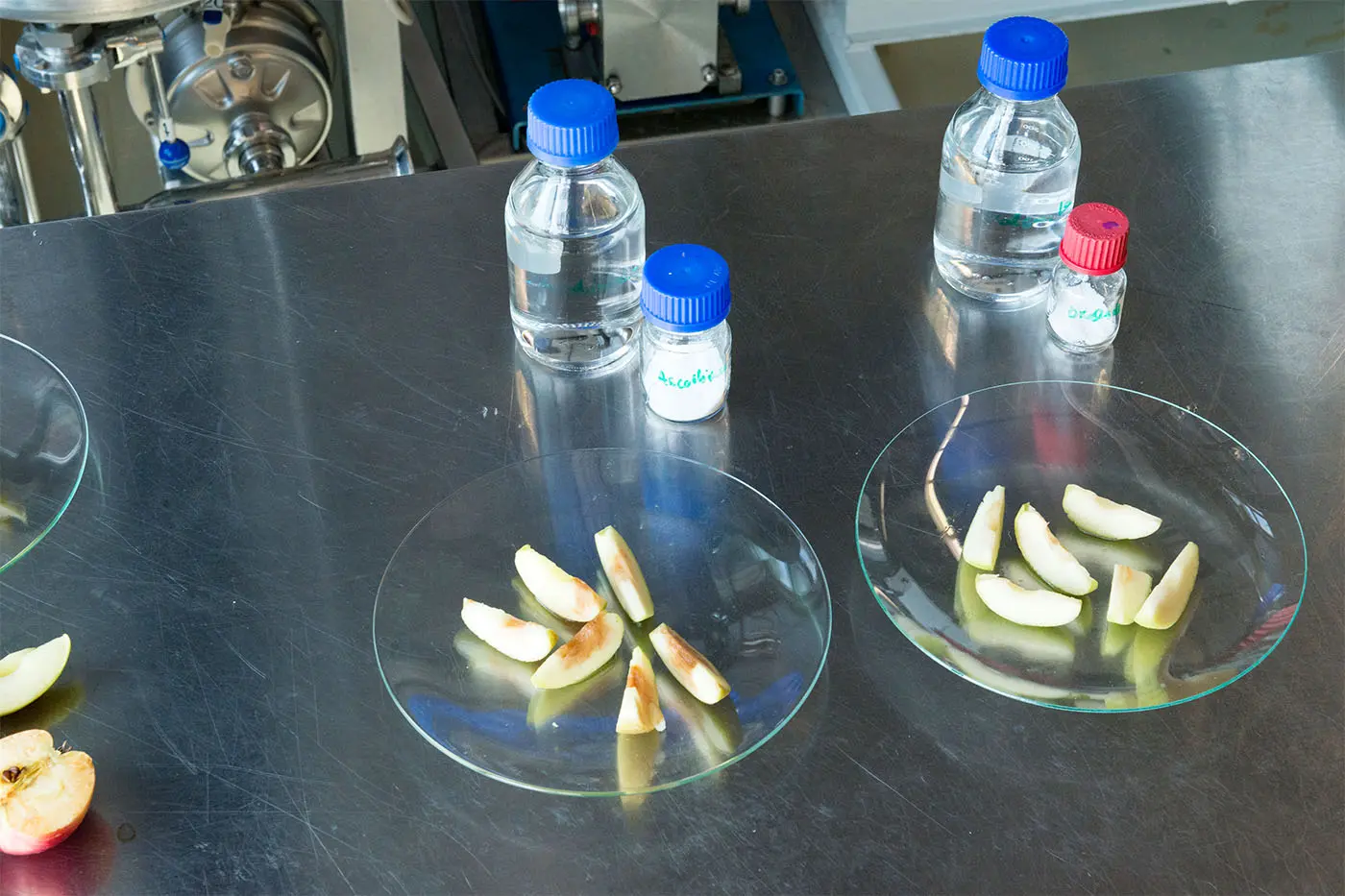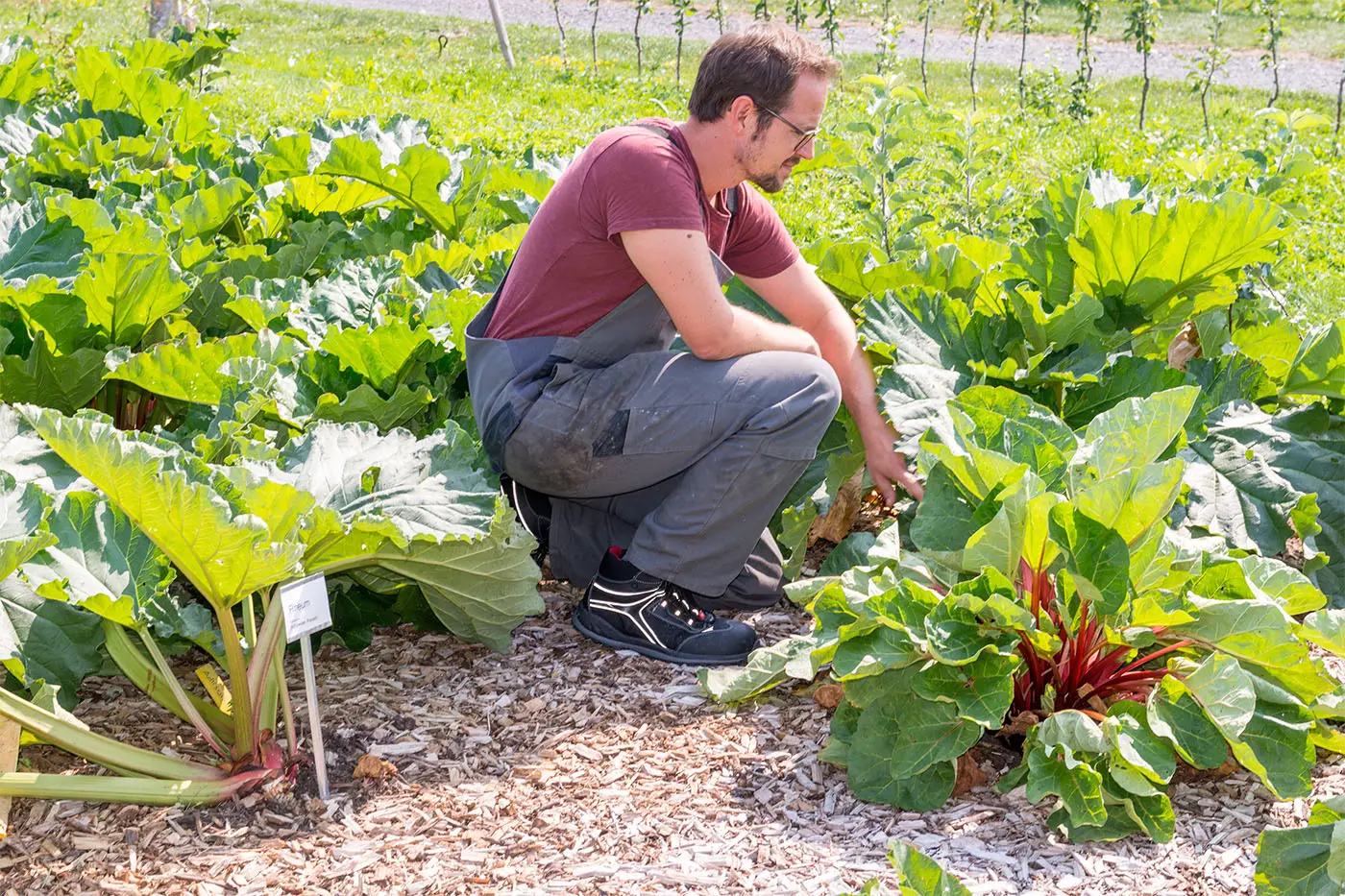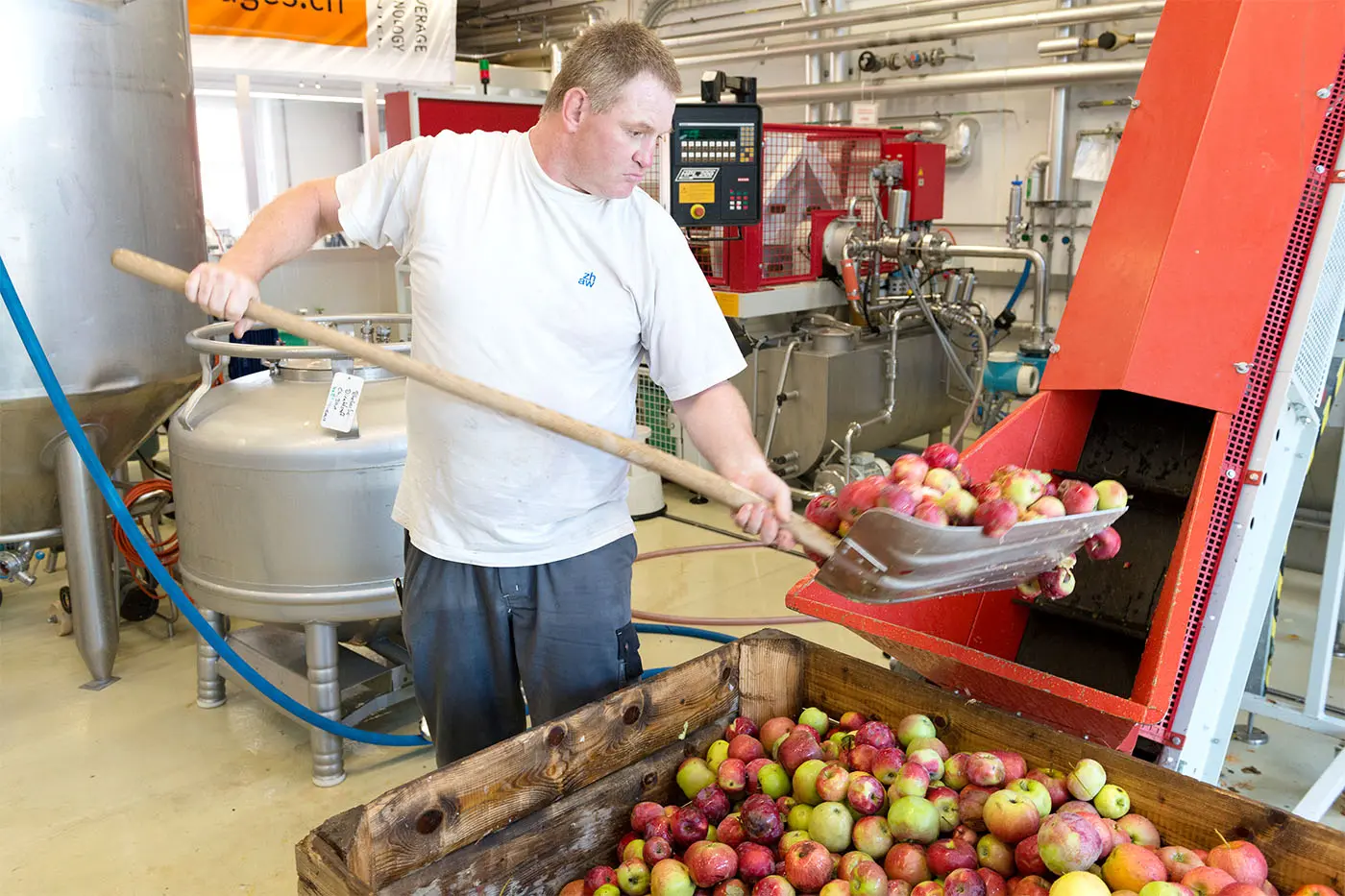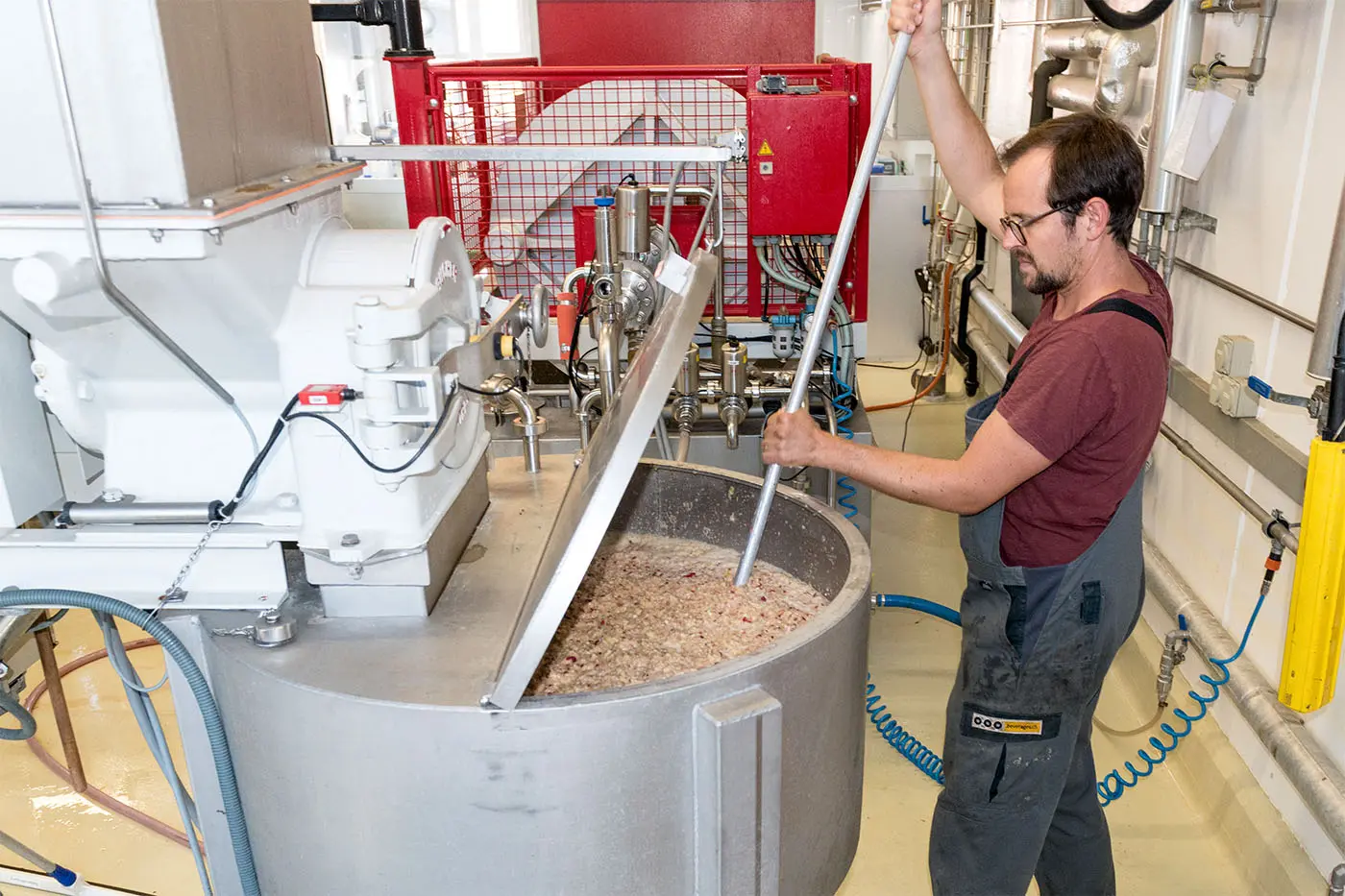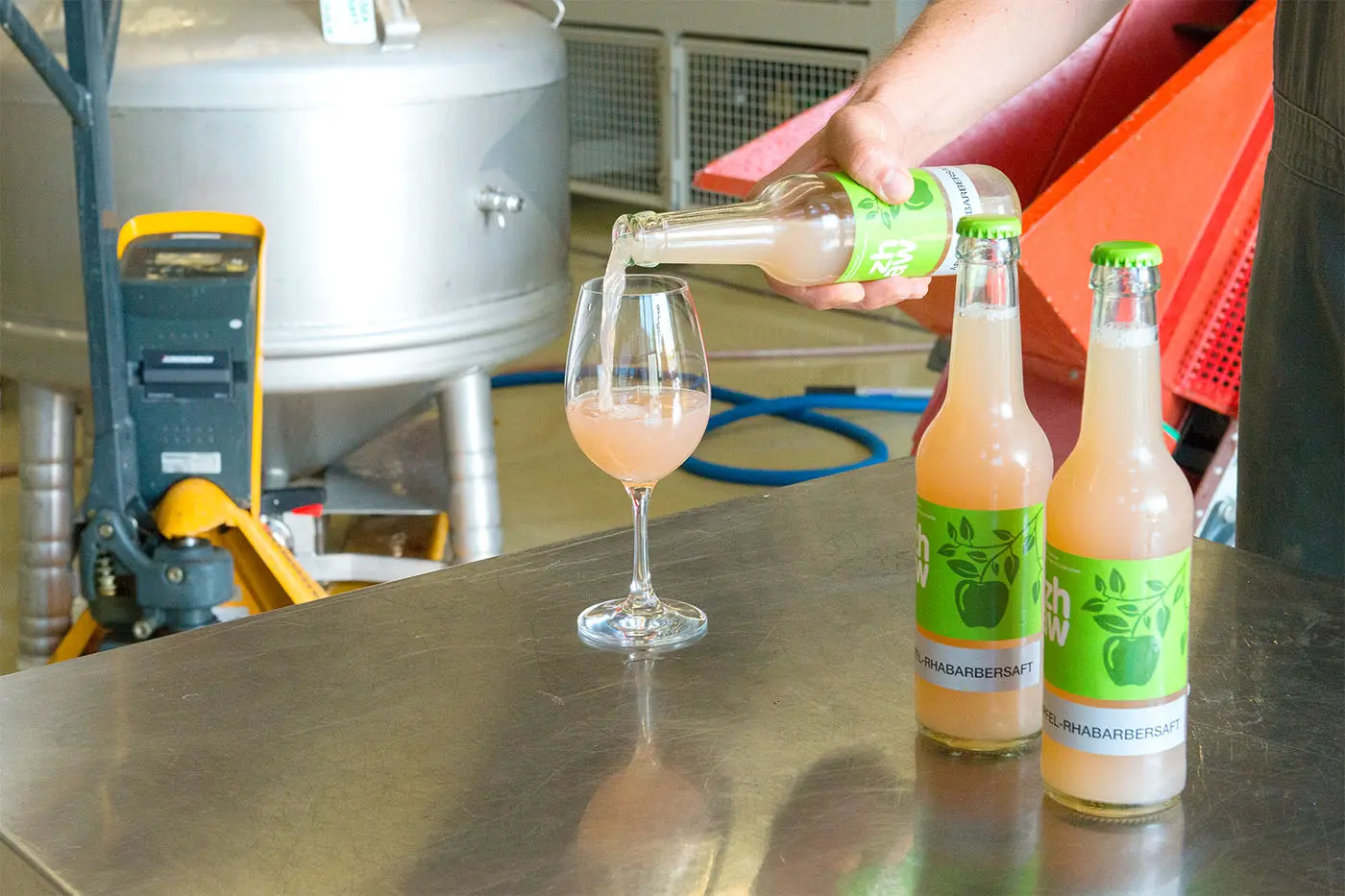Rhubarb juice as a natural antioxidant
Researchers at the Zurich University of Applied Sciences (ZHAW) have used rhubarb juice as a natural antioxidant in food production for the first time. Products, such as cut apple pieces, have been processed without the need for ascorbic acid and sulphur and have remained fresher longer. The cost-effectiveness of various rhubarb varieties is now being investigated.
Rhubarb juice has been used as a natural antioxidant in the industrial processing of fruit for the first time. In collaboration with industrial partner Agrofrucht-Inn, researchers at the ZHAW have extended the shelf life of apple chips and deep-frozen apples by using this natural antioxidant. Whereas fruits that had been conventionally treated with ascorbic acid turned brown after only a few hours, fruits treated with rhubarb juice were prevented from oxidizing. "This provides industry with a major advantage in time-critical processes and makes rhubarb juice particularly interesting as an antioxidant for convenience products like dried fruits, frozen fruits and fruit juices, and even for cut lettuce," says ZHAW researcher Martin Häfele of the Institute for Food and Beverage Innovation. This ZHAW project is supported by the Association of Swiss Vegetable Producers and the Swiss Fruit Association.
Rhubarb corresponds with the spirit of the times
The antioxidant effect of rhubarb juice was discovered as early as the mid-1990s. Rhubarb has a high oxalic acid content, which protects against oxidation. Ascorbic acid or sulphur is most frequently used in the preservation of some foodstuffs. The rhubarb juice process, on the other hand, has never been adapted for commercial application. "Today rhubarb as a natural antioxidant is in keeping with the times," Häfele is convinced." In addition to the ‘Clean Label’, the creation of the additional value in Switzerland also makes it possible to use the ‘Swissness’ label, thereby increasing the attractiveness of the concept even further. Rhubarb plants thrive in Switzerland because of their soil and climate requirements. Pesticides are not necessary because of the early harvest period from April to the end of June. With up to 30 tonnes per hectare of land, rhubarb perennials can be produced both organically and cost-effectively. Rhubarb now provides a natural means of enzyme control for organically grown produce that is not possible with ascorbic acid, which is prohibited for use on organic products. Furthermore, rhubarb juice can also be used as an antioxidant in kosher or halal products.
Cost as an inhibiting factor
Rhubarb juice has not yet replaced ascorbic acid as an antioxidant largely for economic reasons. Currently, the cost of protecting 100 litres of apple juice from oxidation with ascorbic acid is approximately 1 Swiss franc, whereas the cost is 30 times greater with rhubarb juice concentrate. For this reason, Martin Häfele and a team from the ZHAW Food Process Development and Horticulture research groups are now investigating the aroma, yield and oxalic acid content of various rhubarb varieties. Cultivation of rhubarb varieties in Switzerland has hitherto been focussed on varieties with a low oxalic acid content, as the rhubarb is almost exclusively used for direct consumption. However, rhubarb varieties are now being evaluated based on their cost competitiveness in producing the new antioxidant. A higher concentration of oxalic acid in rhubarb juice will reduce the amount of concentrate required for processing and hence reduce costs.
Reduced sugar juices
In addition to its use as an antioxidant, rhubarb – with its fresh and fruity aroma – is especially suited as a complementary ingredient in fruit juices. The sugar content in the end product can be significantly reduced due to the low sugar content of rhubarb juice of 10 to 15 grams per litre. The aromatic differences of the cultivated varieties, both sensorially and analytically, and the process-related changes in aroma are therefore being investigated as part of the ZHAW project. The researchers at ZHAW have already produced an apple juice enriched with rhubarb juice for testing purposes. "Our aim is to promote rhubarb juice as a biologically and ecologically sensible alternative to the common antioxidants," says Häfele.
Contact
Martin Häfele, Research Associate, Food Processing Research Group, Institute of Food and Beverage Innovation, ZHAW Life Sciences and Facility Management, Tel. +41 58 934 57 36, E-Mail martin.haefele@zhaw.ch
Kathrin Reimann, ZHAW Corporate Communications, Telefon +41 58 934 75 75, E-Mail medien@zhaw.ch
